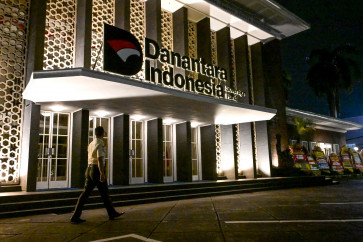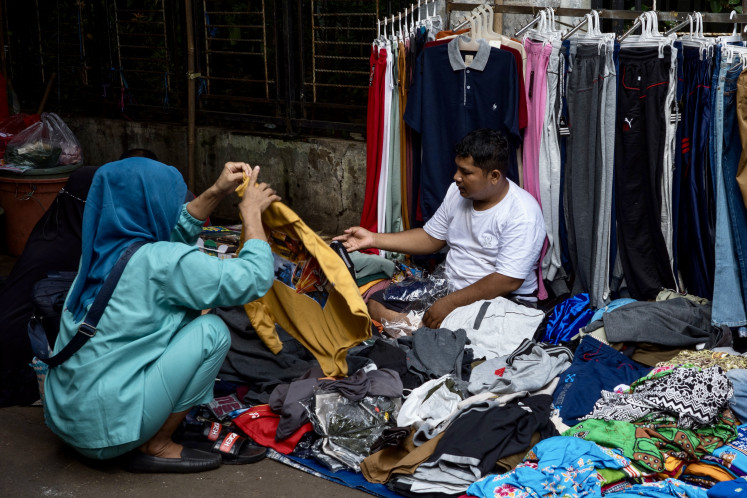Popular Reads
Top Results
Can't find what you're looking for?
View all search resultsPopular Reads
Top Results
Can't find what you're looking for?
View all search resultsForex reserves fall $4b on high dollar demand
Indonesia’s foreign exchange (forex) reserves lost their momentum in January by sliding about US$4 billion to $108
Change text size
Gift Premium Articles
to Anyone
I
ndonesia’s foreign exchange (forex) reserves lost their momentum in January by sliding about US$4 billion to $108.8 billion, the lowest level in six months, as the central bank took “bold” measures to safeguard the rupiah amid the sharp increase in corporate demand for the US dollar, the central bank said.
The country’s foreign exchange reserves previously stood at $112.8 billion at the end of December, rising slightly from 111.28 billion at the end of November.
“The forex reserves declined considerably to fulfill the big demand [of dollars] from companies, while supply remained limited at the beginning of the year,” Bank Indonesia (BI) Deputy Governor Hartadi A. Sarwono said on Thursday.
The central bank would remain in the market to support the rupiah from deviating too far from its fundamental rate, he added.
Despite the fall, the $108.8 billion figure at the end of January was sufficient to pay for six months of imports and short-term debts, the central bank said.
The fall of forex reserves in January was the first since June last year, when it dropped $5 billion compared to a month earlier. Afterward, BI’s forex reserves rallied for six consecutive months thanks to the strong inflow of foreign funds from portfolio and direct investments during the period.
BI announced in mid-January that it would single-handedly provide dollars for PT PLN and PT Pertamina, forbidding them to buy dollars from the money market. The two state energy companies are the nation’s biggest dollar buyers due to the huge needs of oil imports in their operations.
By the end of January, Hartadi pledged more intervention to protect the rupiah, saying that BI would enter the currency market “boldly” to reduce the gap between the supply and demand of dollars.
Analysts have expressed optimism that the central bank might not have to dig deep into its forex reserves in coming months as the rupiah may benefit from loose monetary policies overseas.
“The rupiah should benefit from the bearish trend of the US dollar, which may persist throughout the first half of the year,” said Mika Martumpal, a currency analyst with Bank CIMB Niaga, on Thursday.
Earlier this year, BI’s newly-appointed assistant governor for monetary policy, Perry Warjiyo, also said the rupiah normally saw “less pressure” during the January-March period as exports rebounded and imports declined compared to the previous quarter.
BI’s top officials will convene at its monthly board of governors’ meeting on Feb. 12 to determine monetary policies.
Analysts forecast that BI is likely to retain its benchmark rate at 5.75 percent, but believe declining forex reserves — coupled with January’s high inflation of 1 percent — will tempt it to make an adjustment to its deposit facility rate (Fasbi), currently at 4 percent.
“This [declining forex reserves] will keep concerns lingering about the sustainability of such interventions. BI can tighten up via hikes in the Fasbi rate,” said Enrico Tanuwidjaja, a Royal Bank of Scotland (RBS) economist, on Thursday.
The rupiah on Thursday strengthened 0.15 percent to 9,695 per dollar, according to Bloomberg. One-month nondeliverable forwards rose 0.05 percent to 9,715. The rupiah came under pressure last month, reaching its weakest level in three years of 9,785, on Jan. 2. The difference between rupiah quotes in local and offshore banks reached 2.6 percent on Jan. 11, the widest since Sept. 22, 2011. (sat)










